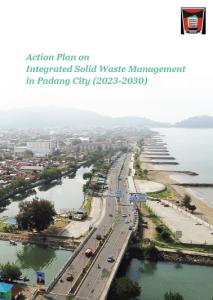Padang City, the capital of West Sumatra Province, has a population of 982,884 people as of 2021. A field study was
carried out and showed that waste generation in the city reached 660.50 tonnes/day while the volume of waste
disposed of at the Tempat Pemrosesan Akhir (TPA: final disposal site in Bahasa Indonesia) Aia Dingin in 2021 was 478
tonnes/day, or 72.4% of total waste generated. Only 7.0% was recycled, 0.4% was composted, and the remaining
20.2% was either burned, dumped, or leaked into the environment. With the increasing mixed waste generation due to
litile or no practise of waste separation at the source, TPA Aia Dingin is predicted to be at full capacity by 2026 even
though it was designed to be able to operate until 2030 initially. The life of the TPA has been shortened and resources
with economic value have been wasted. In addition, the increasing amount of waste puts a heavy burden on the
municipal budget.
Efforts to establish and increase community-based waste banks and Tempat Penampungan Sementara 3Rs (TPS3Rs: sorting facility) for each kelurahan (“subdistrict” in Bahasa Indonesia) were expected to reduce waste going to the TPA. However, based on preliminary studies and interviews, no TPS3R is currently active and most waste banks do not collect enough recyclables to make a profit due to the lack of community participation and insufficient finance for operations. Some community residents still dump or burn their waste in open areas, resulting in air and water pollution.
Under such circumstances, two waste management targets have been determined in JAKSTRADAs in Padang City,
namely, a 30% reduction in waste and ensuring that 70% waste is handled properly. This action plan has been
developed to achieve the targets under the principle of a circular economy (optimisation of material with less
consumption of energy and resources before disposal) instead of a linear economy (from collection to transportation
and disposal).

